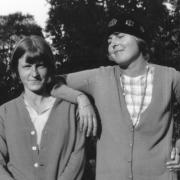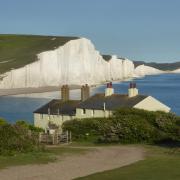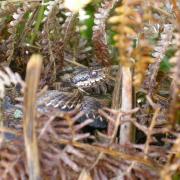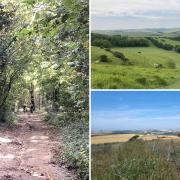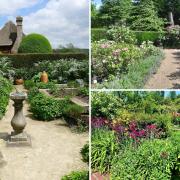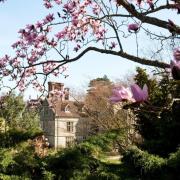White is the combination of all colours. Judging by the cover and the typeface that is used I reckon my Observer Book Of Butterflies is either the revised edition which came out in 1969 or it is the slightly later reprint which was published in 1974.
In my edition it says this about a small delicate white butterfly called the Wood White: ‘It is found in many parts of England and Wales especially in the southern and western counties.’ That was 50 years ago and since then the Wood White has just about gone from Sussex and is clinging on in a few woodlands on the Surrey/ Sussex border. There are also some isolated populations of the threatened butterfly - it is Endangered on the Red List - left in Devon and the Welsh borders as well as in the Burren on the West coast of Ireland.
As someone who tends a vegetable patch, the white butterflies and I have a slightly tempestuous relationship. I net the broccoli and the cabbages, and they sneak in through the ‘butterfly proof’ netting. They craftily lay their eggs on the undersides of the succulent leaves. The caterpillars hatch, I shoot off for the weekend and by the time I return it is little more than a bedraggled stand of stalks and stems.
But true to its name the Wood White lives on the edges and along the stretches of woodland rides. It is not a garden butterfly and it is, out of all the white butterflies, by far the best dancer. I happened to cross the county boundary and visit a woodland near Chiddingfold and there they were, dancing their ballet set to the music of the breeze in the leaves. I had never seen one before - since my childhood they had been ghosts in my butterfly books and they have, without doubt, a sweetness, a purity around them; they are supremely delicate, fragile beings.
It was bamboo that brought on their demise. These slow-flying butterflies bred in ancient deciduous woodland that had a long history of coppicing, that is the cutting down to the ground of hazel. The resulting rods were which were the straight growth of sprouting hazel stumps, were used in their millions for fencing and by gardeners for runner bean poles and the like. As coppicing declined, because of the collapse of traditional markets, so the number of Wood White colonies rapidly declined in size and number.
The close planting of commercial woodlands quite literally creates a dead zone, and in woodlands that are left unmanaged, the canopy thickens and they grow darker and darker. The woodlands I visited are now being brought back to life. The trees are being thinned to allow light to reach the woodland floor. This, in turn, means woodland plants can grow- vetches, violets, red campion – they attract insects which attract birds back into the woods. And where there had been silence there is now song and the Wood Whites are finding their way back to dance again.
But why does it matter? Why do they matter? They matter because this is a story of hope that with all our current knowledge and understanding of habitats, and in what worlds certain creatures will thrive, should we choose to be the species that honours and cares for other species, then this says a great deal about what it is to be human.
This time last year I was checking the Butterfly Conservation Website for Sussex. Here members post which butterflies they had seen and on what day and where. On May 14, 2022, in a Sussex wood Martin Kalaher saw a courting pair of Wood Whites. Hopefully, this year their offspring will have set up home and these rare, mesmerically beautiful butterflies will be dancing in Sussex again.




